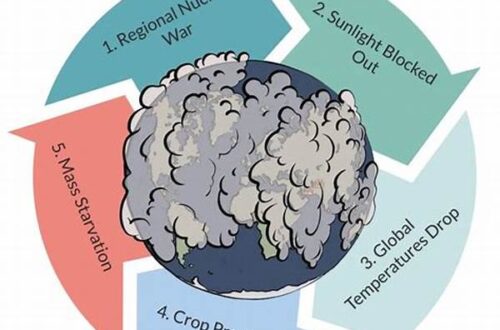The pursuit of international peace is a multidimensional effort that requires the cooperation and collaboration of diverse stakeholders globally. In today’s interconnected world, the traditional methods of diplomacy and negotiation are complemented by innovative collaborative approaches. These include a wide array of strategies encompassing governmental, non-governmental, and international bodies working together towards a common goal. The significance of collaborative approaches to international peace cannot be understated, as they foster the sharing of resources, knowledge, and capabilities, thus ensuring a more comprehensive and sustainable peace.
The Role of Multilateral Diplomacy
Multilateral diplomacy is a cornerstone of collaborative approaches to international peace. It involves cooperation among multiple countries to address global issues that no single nation can solve alone. This form of diplomacy increases the efficiency and legitimacy of international endeavors, as decisions are made collectively, reflecting the diverse perspectives of participating nations. In practice, multilateral diplomacy facilitates dialogue, mediates conflicts, and encourages the peaceful resolution of disputes. By leveraging collective expertise and resources, multilateral frameworks create an environment conducive to establishing long-term peace.
Key Attributes of Collaborative Approaches
1. Inclusive Engagement: Collaborative approaches to international peace emphasize the importance of involving a diverse range of stakeholders, from governments to civil society, ensuring a comprehensive response to conflicts.
2. Shared Responsibility: These approaches highlight the necessity for shared responsibility, promoting the idea that peace is a common goal that requires joint efforts and commitments from all parties involved.
3. Strategic Partnerships: Building strategic partnerships between nations, organizations, and communities enhances the capacity to respond effectively to complex peace challenges through coordinated actions and shared resources.
4. Knowledge Sharing: The exchange of information and best practices across borders is vital for collaborative approaches to international peace, allowing for informed decision-making and innovation in peacebuilding initiatives.
5. Adaptability: Flexibility in strategies and policies is crucial, as collaborative approaches must evolve to address changing dynamics and emerging challenges in the pursuit of peace.
Collaborative Efforts in Conflict Resolution
In addressing the complexities of contemporary conflicts, collaborative approaches to international peace involve a multi-layered strategy that incorporates security, governance, development, and human rights. The involvement of international organizations such as the United Nations, alongside regional bodies and local actors, creates a network of actors working in concert to mediate tensions and build sustainable peace frameworks. By pooling resources and expertise, these collaborative efforts can address the root causes of conflicts, ensuring that peace is not only achieved but maintained over the long term.
Moreover, collaborative approaches to international peace strive to empower local communities, recognizing that indigenous knowledge and leadership are crucial for sustainable peace. By involving communities in the peace process, these approaches guarantee that solutions are context-specific and culturally sensitive, ultimately leading to more resilient societies.
Challenges and Opportunities in Collaboration
While the benefits of collaborative approaches to international peace are substantial, these efforts encounter challenges such as differing national interests, resource constraints, and political complexities. Overcoming these hurdles requires continuous dialogue, negotiation, and compromise among international actors. Furthermore, technological advancements present opportunities for collaboration, offering novel platforms for communication and information exchange, which can enhance coordination and rapid response to emerging conflicts.
Effective collaborative approaches necessitate transparency, trust-building, and a commitment to upholding international norms and principles. By fostering mutual understanding and cooperation, nations can transform potential areas of conflict into opportunities for partnership and peacebuilding.
Enhancing Global Peace Initiatives
The pursuit of global peace is an ongoing process that necessitates innovative and strategic thinking. Collaborative approaches to international peace augment traditional methods by incorporating diverse perspectives and expertise, thereby strengthening peace initiatives. By working together, countries can develop holistic solutions that address the socio-economic and political dimensions of conflicts.
In today’s ever-changing global landscape, the demand for collaborative approaches is more pressing than ever. By prioritizing inclusivity, adaptability, and responsiveness, the international community can enhance its efforts to prevent conflicts, build resilience, and foster lasting peace.
The Future of Collaborative Peacebuilding
Looking forward, the evolution of collaborative approaches to international peace will depend on the ability of the international community to adapt to dynamic global challenges. This entails embracing technological innovations and integrating them into peacebuilding strategies, thereby enhancing communication, coordination, and effectiveness. The future of peacebuilding lies in the continued commitment to multilateralism, inclusivity, and strategic partnerships.
Ultimately, the success of collaborative approaches to international peace hinges on the dedication of all actors to work beyond their differences, foster mutual respect, and commit to a shared vision of a peaceful and stable world. By capitalizing on the strengths of collective action, the international community can navigate the complexities of modern conflicts and create a legacy of peace for future generations.
Conclusion
In summary, collaborative approaches to international peace are indispensable for fostering sustainable global harmony. Through multilateral diplomacy, strategic partnerships, and inclusive engagement, the international community can address the multifaceted nature of contemporary conflicts. Despite the challenges, the potential of these approaches lies in their ability to unite diverse stakeholders towards a common goal. As the world moves forward, embracing these collaborative principles will be essential for ensuring a future marked by peace, stability, and cooperation.





